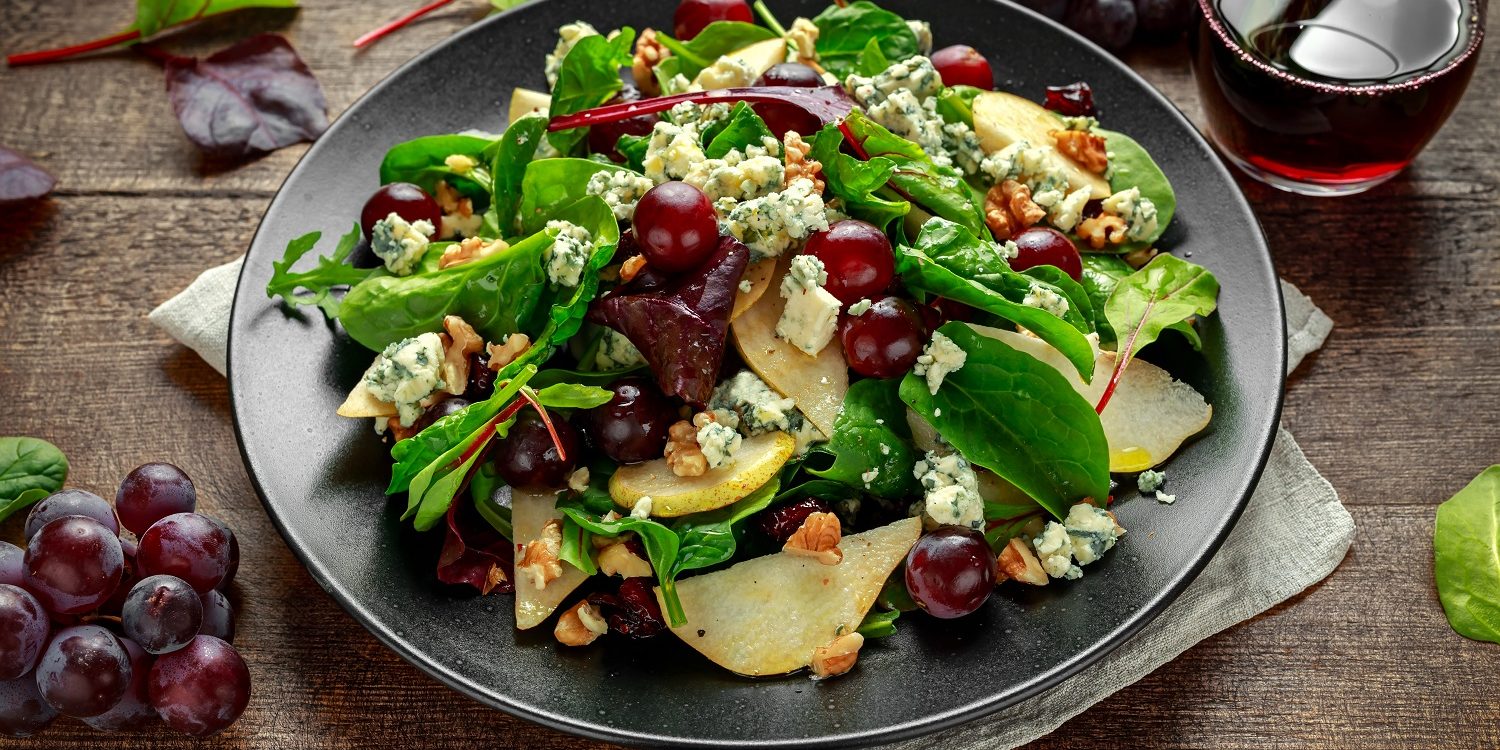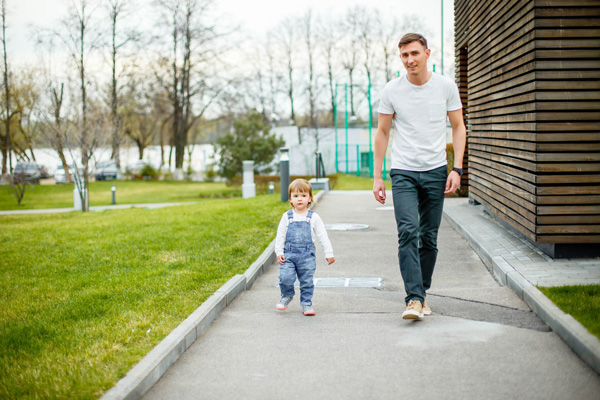Can You Lose Weight Without Changing Your Diet? These 13 Science-Backed Tips Make It Possible!
Losing weight is simple, right? Burn more calories than you consume, stay active, eat a healthy balanced diet. Unfortunately, it’s just not always that easy.
Humans are actually wired to stink at dieting. Think back to our ancestors who had to hunt and gather everything they consumed. Our bodies are designed to accept food and store energy when food is available and resist efforts to burn up these reserves in case of food scarcity. This, of course, was a good thing thousands of years ago when the next meal was never certain.
However, today’s world involves sitting more, almost unlimited access to food, and bodies that are still operating as if we are primal hunters and gatherers.
The good news is that — thanks to decades of research — it is possible to take advantage of some easy tricks for losing weight without trying.
Read on for 13 easy tips for losing weight with minimal effort.
1. Go Blue
When it comes to food, research shows the least appealing color plate to eat off of is blue. It does not have an appealing visual contrast with most foods and actually acts as a sort of appetite suppressant because of this.
There is, however, a time to avoid blue plates: if you are consuming blue food. When the plate matched the color of food, such as blueberries on a blue plate or mac and cheese on an orange plate, studies show that people actually consume more food.
2. Use Smaller Plates
Serving the same amount of food on a smaller plate (say, 8 inches instead of 10 or 12 inches) can help you eat over 20% fewer calories while still being just as satisfied.
This works because it is an optical illusion. The same amount of food fills up a smaller plate more than a larger plate. Your eyes end up tricking you into thinking you ate more food than you actually did since there is no extra space showing on the plate.
As a bonus, make your small plate blue and you can accomplish two tips at the same time.
3. Take a Walk
After a meal, light exercise can help stimulate the receptors in your body that transport glucose, helping your muscles to absorb the glucose from your meal.
This helps stop your insulin levels from spiking, preventing that dreaded ‘crash’ you feel after the initial energy burst after a meal.
Something as simple as a 10-minute walk can elicit positive effects. Why not involve other family members, your pets, or your loved ones? It’s a great way to spend quality time togther, while experiencing a number of positive health effects.
4. Cool Down
Did you know there are actually two types of fat? One is good (the brown kind) and one is bad (white fat).
Brown fat actually benefits us by burning energy (calories) to keep the body warm. Activating this type by exposing your body can accelerate fat loss. Try taking a cold shower, turning down the thermostat, or drinking a glass of ice water. Most brown fat is located on your upper back, neck, and chest, so icing these areas (brrrr!) can work too.
5. Spice It Up
Simply adding a pinch of cayenne pepper to your meal can help crank up your metabolism by as much as 25% for several hours after a meal. Studies credit capsaicin — the compound that naturally gives foods their spiciness — for its effect on metabolism and reduction in cravings for high-fat, sweet foods.
6. Take Pictures of Your Food
Keeping a food journal is a well-known trick for staying healthy, but anyone that has tried this method knows how time-consuming a journal can be.
Fortunately, a recent study found an even better, more efficient way of tracking your food: photo journaling.
Taking a picture of everything you eat has been found to be even more effective — and easier — than keeping track of it than writing it down. There are a variety of apps that make it especially easy to take photos and start tracking your snacks and meals.
7. Drink More Water

Our bodies can trick us into thinking we are hungry when, actually, we are thirsty. Aim to drink more water throughout the day, particularly before snacks and meals.
Drinking a large glass of water before eating has been proven to help people shed more weight than cutting calories alone. And remember to take sips of water throughout your meals to stop you from eating too fast, which can lead to overeating.
8. Chew Gum
Chewing sugar-free gum between meals can actually serve as a short-term appetite suppressant. Research has found that chewing gum for a minimum of 45 minutes can help decrease cravings for sweets, reduce feelings of hunger, and calm your appetite. It has also been shown to decrease the urge to snack.
9. Caffeinate
Have you ever wondering if there is a way to maximize your workout efforts? Try drinking a cup of coffee before working out.
Drinking coffee before hitting the gym can actually help boost your endurance. Caffeine slows down the rate at which the body releases glycogen (the fuel our bodies use during workouts) and encourages it to use fat for fuel instead.
Secondly, include upbeat, high-energy songs in your workout playlist (ideally between 180 beats per minute). The right music can pump you up, help you push harder, and keep you motivated and looking forward to your next workout session.
10. Plug into social media
If you struggle to reach your goals, it might be helpful to find someone to keep you accountable and let them know exactly what your goals are.
Research has found that using social media or progress-tracking apps can lead to increased weight loss when combined with a healthy diet and regular exercise.
Try finding an online community to share your goals, successes, and setbacks and you may find that you reach your goals faster and easier.
11. Out of Sight, Out of Mind

Try hiding your unhealthy snacks at the back of the fridge or cabinets — or better yet, don’t keep them in your house at all!
The same trick can be applied at meal time: fill up your plate in the kitchen, but leave the rest of the food away from the table. Keeping the remaining food out of sight might help you avoid second helpings.
This also works at restaurants (notorious for their massive portions). When you place your order, ask your server to box up half of your meal prior to even bringing it out to you. Increasing the distance between you and your meal means you will be more likely to listen to your body’s hunger cues instead of getting tricked by visual cues.
12. Dream and Believe
As cheesy as it may sound, it is important to envision yourself reaching your goal. Studies back this up.
Research has found that visualizing the attainment of your goal — whether that be reaching the finish line of a 10K, beating your personal record, or learning to do a pull-up, fitting into a smaller pair of jeans — can actually have a positive effect on your performance.
13. Chew More
Eating your food slowly and taking the time to savor it might be one of the simplest tricks on this list, but it offers proven benefits.
The brain requires approximately 20 minutes to register the feeling of fullness, so it is important to give your brain the time it needs to recognize it is full. By slowing down and chewing each bite more times, you can actually lose weight. As mentioned earlier, taking sips of water throughout your meal can also help you slow down.
One study found that chewing each bite 40 times led to an additional loss of 12% body fat than participants who chewed each bite just 15 times. Chewing a bite 40 times may seem like a lot, but you can start small (say 15 or 20) and work your way up from there.
Final Thoughts
While losing weight without really trying may sound too good to be true, implementing one or more of these tips into your health and wellness routine should help you move closer to your weight loss goals with minimal effort.
What tips of these do you plan on trying? Do you already use any of these tips in your routine or have your own tricks you rely on? Let us know in the comments – we value your feedback.










